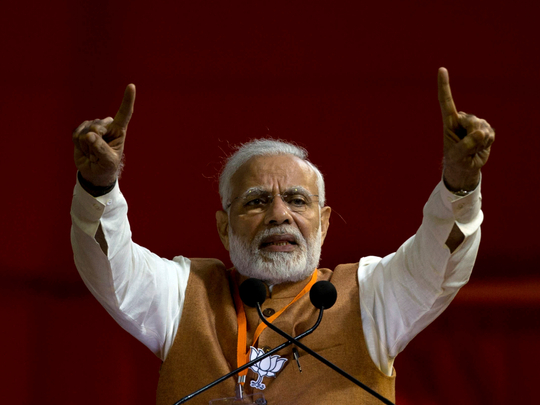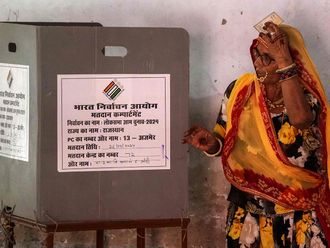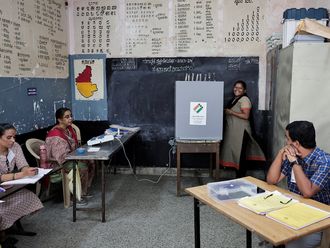
In a scathing comment on how various governments in India have misused the Central Bureau of Investigation (CBI), the Supreme Court of India had once referred to the federal agency as a “caged parrot”. Since its formation in 1963, the CBI’s internal operations have time and again come under direct interference from the Union Government.
The current, ugly spat between the two topmost functionaries of the agency — which is now being looked into by the apex court — is the latest and perhaps the most serious instance of a state institution being made to grapple with meddling from the executive.
However, what is being billed as a “civil war” within the CBI — with its director and joint director trading charges of corruption, misappropriation of authority and tampering with departmental protocol — is the culmination of a jaundiced culture of one-upmanship and subversion of administrative and constitutional sanctity that the current government at the Centre has overseen since being voted to power in the summer of 2014.
The sclerosis had started setting in with the disbanding of India’s Planning Commission. In all fairness to the current Narendra Modi-led dispensation, the efficacy of a Planning Commission was certainly not beyond question. The very idea of a Planning Commission and institution of Five-year Plans were rooted in a Nehruvian obsession with a socialist economy and its concomitants.
And no prime minister had dared tinker with this orthodoxy where drawing up an economic road map for the next half decade and doling out election-year sops in the name of farm-loan waivers were considered par for the course.
Even former prime minister P.V. Narasimha Rao, who had been the most adventurous and pragmatic in trying to bring India out of a socialist cocoon and into the matrices of a competitive market economy, didn’t dare such a move as doing away with the Planning Commission. In that sense, what Modi did was a watershed of sorts and he was initially given credit for thinking out of the box.
But a pattern soon emerged as one after another, the Union Government went about picking fights with almost every state institution that has given the world’s largest democracy a fair bit of institutional solidity and elbowroom to hedge against changing socio-political wind patterns that usually accompany every change of occupant at 7, Race Course Road in New Delhi (the PM’s official residence).
Doing away with the Planning Commission was soon followed by an attempt by the Union Home and Law Ministries to do away with the Collegium system of appointing judges to higher courts, suggesting the Collegium’s replacement with a selection panel wherein the Union Government would have its own representative.
With this, the Supreme Court was needlessly dragged into a public spat with the executive that could and should have been avoided at any cost. Then followed the appointment of a joint-director in CBI and the subsequent washing of dirty linen by the top functionaries of the premier agency.
What has come as the latest shocker and one of the worst instances of administrative overreach is the Union Finance Ministry getting into an ‘us-vs-them’ with the Reserve Bank of India (RBI), resulting in the then RBI governor, Urjit Patel, putting in his papers last week — almost a year ahead of the scheduled end of his term.
Since India’s independence, the central bank and the Union Government have not always been on the same page. The RBI’s prerogative as the custodian of the nation’s monetary and credit policy has often been at loggerheads with the Central Government’s political commitments.
Saddled with bad debts
However, never before has one seen the Union Finance Ministry and the central bank trying to tell each other who the real boss is! With commercial banks saddled with bad debts worth Rs8.40 trillion or Dh437.99 billion (as of March 9, this year) and big-ticket financial offenders making a mockery of public sector banks’ lax credit policies, the RBI had little or no option but to push for a stringent credit policy.
The problem for the current government is that it has little to show for its success in tangible terms by way of the goods and services tax (GST) and employment generation. Heading into an election year, cheap money-flow in the market, with banks loosening their purse strings, was one area that the government was banking on to push ahead with populist economic measures. However, ironically, even with its hand-picked choice of Patel as RBI governor, the Union Finance Ministry failed to get the central bank to dance to its tune.
Institutional sanctity and protocol take decades to firm up and acquire a character of their own. In India, fortunately, in the seven decades since independence, with certain constitutional guarantees and adequate checks and balances in place, entities such as the Supreme Court, CBI, RBI have successfully built their own mechanisms to buffer strong political headwinds and hold their own — a virtue that now seems scarily headed for a meltdown in the face of political nihilism.
You can follow Sanjib Kumar Das on Twitter: @moumiayush.












